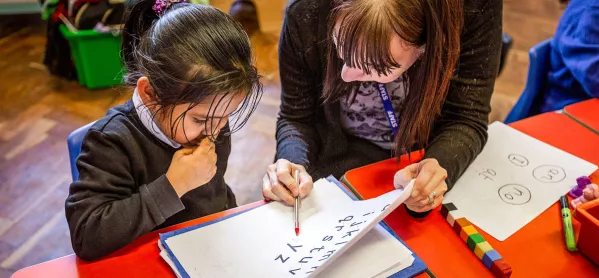- Home
- News
- Specialist Sector
- Two-thirds of special schools full amid SEND crisis
Two-thirds of special schools full amid SEND crisis

Around two-thirds of special schools were at or over capacity in the last academic year, according to the latest government figures.
For 2022-23, there were approximately 4,000 more pupils on roll in special schools than the reported capacity available across the sector.
This is the first year the school capacity survey has collected data on special educational needs and disabilities (SEND) provision.
There were 148,000 special school places reported for 2022-23, with 152,000 pupils on roll.
The shortfall in places was driven by secondary-age students, with 88,000 secondary special places reported compared to 94,000 on roll. There was a surplus of 2,000 reported for primary special places.
‘Complete mismatch’ between demand and funding
Rob Williams, senior policy advisor at the NAHT school leaders’ union, said the figures reflected “the complete mismatch” between SEND demand and funding available, and called for government action to address this.
He added: “There are simply not enough special schools for pupils who need more specialist support.
“Many children are therefore instead being placed in mainstream schools, which may themselves be over-capacity and may not have the staff, expertise or resources needed to offer the best possible education and support.”
Geoff Barton, general secretary of the Association of School and College Leaders, said the government’s recent announcement of new special schools will take “years to materialise”, and will not meet the needs of children in the system currently.
- Related: Plan school places ‘constructively’ with councils, trusts told
- Falling rolls: Vacant space will mean ‘large cost burden’, schools warned
- Primary school closures: The reality of the birth rate drop
The Department for Education did caution this surplus at primary may be due to how the capacity of all-through special schools has been split between primary and secondary in the data.
This comes amid a spiralling crisis in SEND provision of growing demand that MPs have said far outweighs funding and capacity available.
The new figures also reported 9,000 places in SEND units in mainstream schools - 6,000 in primary and 3,000 in secondary.
Around 18 per cent of all schools (3,670) were at or in excess of capacity for 2022-23, similar to the previous year. Around 7 per cent of schools exceeded their capacity by 10 or more pupils.
This is more potent for secondary schools, where 790 schools (23 per cent) are at or over capacity (640 by 10 or more students). This is similar to the previous year, though up from a low of 14 per cent in 2015-16.
Pupil numbers
The reduction in birth rates is impacting the number of extra school places being added, the DfE has said in its data published this morning.
It said: “The rate of primary places being added has slowed dramatically due to the reduction in birth rates since 2012. The rate of secondary places being added has slowed, as the peak in school-age population is now in secondary having moved from primary.”
London Councils said in January 2023 that it expected London boroughs would see an average 7.3 per cent drop in Reception pupil numbers over the following three years.
Among primary schools, 83 per cent had one or more unfilled places for 2022-23.
This is particularly seen in Inner London, where 21.2 per cent of places at primary were unfilled for 2022-23. Lambeth borough had 28.7 per cent of primary places unfilled.
Planning places
Academy trusts and local authorities are expected to work together to increase and reduce school places in line with changing demand, government guidance has set out.
Around 30,000 primary places are still expected to be needed across England to meet demand in 2027-28, despite declines in primary pupils nationally.
Additionally, 40,000 extra places are estimated to be needed at secondary by 2027-28.
Local authorities have reported a planned net increase of just under 54,000 places by 2025-26. The planned increase has reduced recently as demand for places has slowed down.
A DfE spokesperson said it is investing £2.6 billion between 2022 and 2025 to deliver new SEND places and improve existing provision, and added that it has 77 special free schools that are approved to open, with funding confirmed in the Spring Budget for 15 more.
For the latest education news and analysis delivered directly to your inbox every weekday morning, sign up to the Tes Daily newsletter
Keep reading for just £1 per month
You've reached your limit of free articles this month. Subscribe for £1 per month for three months and get:
- Unlimited access to all Tes magazine content
- Exclusive subscriber-only stories
- Award-winning email newsletters



